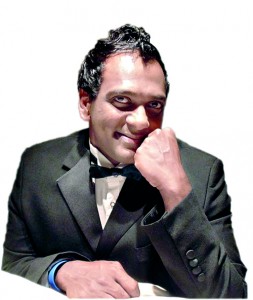Mozart would have liked a conductor on stage
View(s):Mozart was the main draw for this member of the audience at the recent Chamber Music Society of Colombo concert at the Lionel Wendt Theatre. The event was tagged “From Venice to Vienna” and featured the music of Rossini, J. S. Bach, C. P. E. Bach, and Wolfgang Amadeus Mozart.
The Chamber Music Society is known for its adventurous spirit, probing cobwebbed archives for old or obscure composers, gingerly running its fingers along the cutting edge of contemporary music, while visiting well-known concert pieces to give its programming the right weight. Novelty, history and variety are strong considerations in the Society’s lively programming. This is good. This is great. We need all the exposure we can get to the famous and less famous, the old and the new.
The March 27 concert balanced two popular masterworks – the Bach Brandenburg Concerto No. 3 in G major and the Mozart Piano Concerto No. 23 in A Major, K 488 – and two lesser known or not too frequently performed works – Rossini’s Overture to Il Signor Bruschino and C. P. E . Bach’s Sinfonie in F Major.
That evening, son Carl Phillip Emanuel came off sounding rather better than Bach père, the great Johann Sebastian. The Sinfonie is full and vigorous, and a well-rehearsed performance cannot fail. The Chamber Society was in excellent form here, the performers relishing the work’s velocity, wit and daring harmonies. The Brandenburg in G requires a small group, more chamber than orchestral – three first violins, three violas, three cellos, and basso continuo. The strings are exposed all the way, and just one instrumentalist playing even fractionally out of tune will let down the whole ensemble. We wished the string players had spent extra time rehearsing so they could hit their notes spot-on all the way, knowing well they are mercilessly exposed in a work like the Brandenburg in G, No. 3.
The second half of the concert was devoted to the hauntingly beautiful, deeply moving Mozart A Major Piano Concerto, which soloist Ashan Peiris delivered with finesse, charm and touching modesty. Orchestra and soloist played bravely, and with spirit.
The Chamber Music Society takes pride in performing without a conductor on the podium to lead the way and to ensure strict timing and cohesive playing. With a complex work like a Mozart concerto, dispensing with a conductor can be highly risky. While soloist and orchestra pulled off the work with no serious mishaps, there were anxious moments. The soloist gave the initial wave to set the orchestra on its way, but after that he was on his own; much of the time you sensed concern on everyone’s part that someone, some section, might go off rail. The final movement was bracing, the players at moments almost racing to reach the finish line without a crash.
Performers and audience would have had no worries if the ever-dependable Eshantha Peiris, who was at the keyboard during the C. P. E. Bach Sinfonie, had been given the conductor’s baton for the Mozart. We could have all sat back and enjoyed the work, secure in the knowledge that the concerto was in good hands.
S. P.



